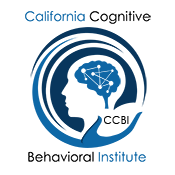Dangers of Couples Counseling Couples Counseling is Not Recommended By…
The American Bar Association
Futures Without Violence
California Partnership to End Domestic Violence
All US State Coalitions Against DV
The Department of Justice (prohibits)
National Network to End DV
National Coalition Against DV
Couples Counseling is Dangerous
Because It…
- Endangers victims
- Can blame the victim
- When focusing on couple’s interaction by ignoring the denial, minimization and deception Increases the victim’s isolation, as she may fear to speak in therapy sessions, for fear of retribution and more violence at home
- Implies the victim is responsible for seeing that her batterer gets help
Couples Counseling is Not a Viable Therapeutic Tool in Domestic Violence
Because…
- Couples counseling is beneficial for MARITAL problems,
- and domestic violence is a VIOLENT CRIMINAL ACT not a marital problem
- Domestic violence is illegal Domestic violence is solely the responsibility of the offender, regardless of perspective or provocation
- Domestic violence is a chosen strategy
- The offender alone is capable of changing his behavior
Do Not Engage in Couples Counseling Unless…
- The former batterer has completed a Batterer Intervention Program
- The batterer has acknowledged his responsibility for his violent actions
- The batterer recognizes his ability to stop his violence toward his partner and further clearly states that he will not be violent towards his partner
- The victim validates, in separate session, that he has not been violent for one year and has affirmed his commitment to never be so again
- The victim has supports in place and is actively progressing from dependence to freedom
Couple’s Counseling is Dangerous for Victims:
Citations Couples counseling is dangerous for battered women and not recommended.
Judicial Subcommittee of the American Bar Association’s Commission on Domestic Violence, “Judicial Checklist” 2002. Page 2 “…Couples therapy may place victim in danger of further abuse and retaliation; may be psychologically harmful.”
Regarding mediation, “… Generally inappropriate due to a power imbalance between parties; if mediation is required, mediators should be trained in the dynamics of domestic violence and safety planning. Parties should be interviewed separately. Can be dangerous to victim/children by increasing risk of retaliation.”
National Coalition Against Domestic Violence (NCADV) – Each of the 52 member state coalitions have standards and policies that state that couples counseling is dangerous for Battered Women and not recommended.
Holtzworth-Munroe, A. “Standards for Batterer Treatment Programs: How Can Research Inform Our Decisions? Journal of Aggression, Maltreatment, and Trauma v5 n2 (2001) pp. 165 – 180. Specifically pp. 168 – 170, Section 4.5 of the Massachusetts state standards states, “Any form of couples or conjoint counseling or marriage enhancement weekends or groups are inappropriate initially…couples counseling shall not be considered a component of batterer treatment.”
Lundy Bancroft, R. and Silverman, J. “The Batterer as Parent: Addressing the Impact of Domestic Violence on Family Dynamics” (2002) This book makes the point that batterers are adept at adopting a positive public persona in contrast to their persona at home, and are adept at manipulating those outside the family to credit their false persona, including police officers, judges, mediators, evaluators, and clinicians.
Schechter & Edleson. (1998) “Couples counseling should generally not be ordered in domestic violence cases.” California Penal Code Section 1203.097 (c)(1)(G) A requirement that [batterer’s intervention programs] excludes any couple counseling or family counseling, or both. (c)(3)(D) No victim shall be compelled to participate in a program or counseling, and no program may condition a defendant’s enrollment on participation by the victim.
National Council of Juvenile and Family Court Judges. “Effective Intervention in Domestic Violence and Child Maltreatment Cases: Guidelines for Policy and Practice [Greenbook]” (1998) Reno, NV. Specifically pp. 66-67 “Safety concerns also may arise in the context of couple conjoin, or family therapy. To include couple, conjoin, or family therapy in a service plan against the wishes of the adult victim…should be avoided. Many victims describe fear and safety concerns surrounding the disclosure of information…in couple counseling sessions where their abusers are present…concerns for safety contraindicate couple or conjoint counseling sessions as a primary or first intervention with family.”
Whalen, Mollie. “Counseling to End Violence Against Women: A Subversive Model” (1996) Chapter Five – Counseling Practice With Battered Women. Couple’s Counseling is Dangerous for Victims: Citations (Continued) Lemon, Nancy K. D., “Domestic Violence Law: A Comprehensive Overview of Cases and Sources” (1996). See Introduction, E. Use of Mental Health Professionals to Help Resolve Custody and Visitation Issues. “…Courts are increasingly relying on mental health professionals to assist in the resolution of custody cases. These professionals may play the role of evaluator, mediator, arbitrator, or special master. Commentators have expressed grave concerns about the advisability of using mental health professionals to help resolve domestic violence custody cases, pointing to their almost universal lack of training on the subject of domestic violence and consequent inability to recognize the issues or to respond appropriately. For example, a recent study surveyed several hundred therapists regarding two actual domestic violence cases, including one where the victim was eventually killed by the perpetrator. 41% of the therapists failed to identify any of the obvious evidence of the violence. Not one therapist identified lethality as a concern. Those therapists who did identify the conflict seriously minimized its severity. 55% said they would not intervene. Another 14% concluded that they would work on the couple’s communication style. Clearly these therapists did not know what to do with battered women and batterers.
The Model Code on Domestic and Family Violence recommends that mediators screen for domestic violence and do not engage in mediation in these cases unless the victim has requested this procedure, the mediation is provided in a specialized manner that protects the safety of the victim by a certified mediator who is trained in this area, and the victim is allowed to have a support person of her choice present, including an attorney or advocate.
Frank, Phyllis B. M.A. & Houghton, Beverly D. Ph.D. “Confronting the Batterer: A Guide to Creating the Spouse Abuse Educational Workshop,” for the Volunteer Counseling Service of Rockland Co. Policy statement on couples counseling Frank, Phyllis B. & Golden, Gail Kadison. When 50-50 is Not Fair: “The Case Against Couple Counseling When Men Abuse Women” (2002). An earlier version was first printed in Social Work (November 1994). “…when working in relationships in which a man abuses his partner, social workers may be tempted to encourage the woman to learn to alter her behavior so as not to provoke her partner to abuse her. The woman cannot do this (Davis & Hagen, 1992). Because her behavior is in no way responsible for her spouse’s abusiveness, any changes she makes will not be the deciding factor in his stopping the abuse.
Men are abusive to their women partners because of thousands of years of patriarchal culture, institutions, and laws that have permitted, condoned, and even encouraged these actions (Jones & Schechter, 1992). Counseling an abusive man and his partner together conceals, and therefore perpetuates, the historic and damaging entitlements. It also gives the message that one can improve a relationship without exposing and stopping a man’s abusiveness. In fact, the man must end his abusiveness and his sense of entitlement to his partner and her services before couples work can be even considered (Adams, 1988).
Arresting domestic violence offenders and strong judicial monitoring are actually the most effective “therapeutic” interventions yet discovered (Sherman, 1982). Conversely, family systems therapy, which isolates the problem in the relationship, endangers battered women (Jones & Schechter, 1992). So does mediation, which assumes that the two parties have equal standing in a dispute and the ability to negotiate fairly. In fact, “mediation of an assault” is a conflict in terms (Jones & Schechter, 1992, pg. 239) Couple’s Counseling is Dangerous for Victims: Citations (Continued) Wetendorf, Diane. “Police Domestic Violence: A Handbook for Victims,” “…
Therapists who lack training in the dynamics of domestic violence often unwittingly collude with the batterer. They do not recognize or challenge the batterer’s rationalizations for his behavior. The therapist may buy into the “stress of the job” hypothesis, or diagnose him with poor impulse control, or intermittent explosive disorder. They do not recognize that he is able to refrain from using violence when in the presence of his colleagues, his commanding officer, or the judge.
**** Due to the extreme danger to the woman, domestic violence counselors advise against couple’s counseling. The imbalance of power in the relationship makes it impossible for a victim to safely express their thoughts or emotions. The abuser will later use against them what they disclose in the sessions – he is likely to be furious that a victim talked about such personal things, or that they made him sound like a monster while they presented themselves like an angel. Remember that the therapist will not be there to defend or to protect after the counseling session is over unless they have been properly trained, willing to report and supply a Declaration/Affidavit to the courts on a victims behalf. Very few will ever be willing to testify on behalf of a victim of domestic violence. This must change or they not be allowed to work with victims of abuse.

